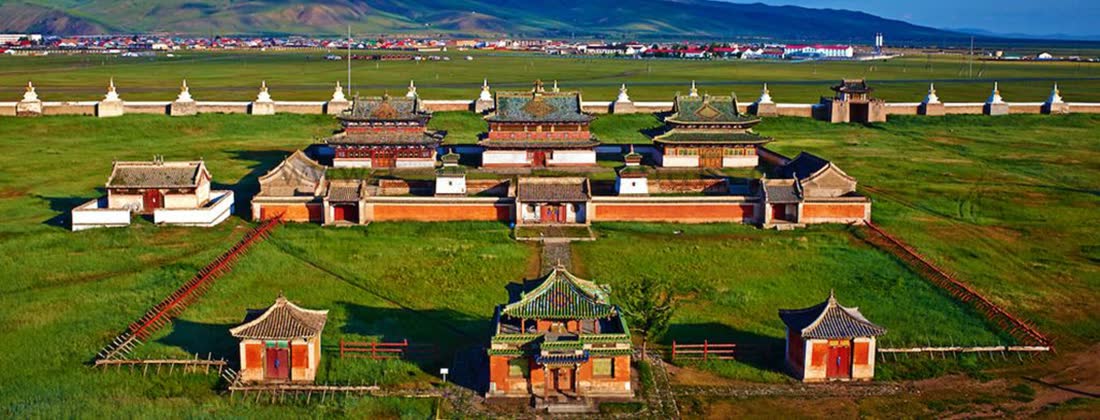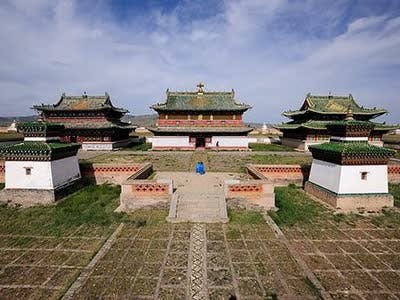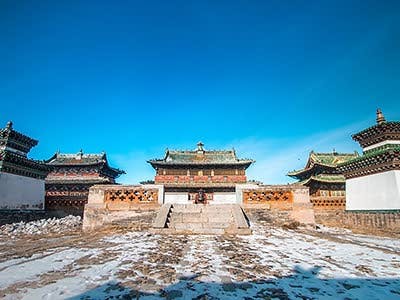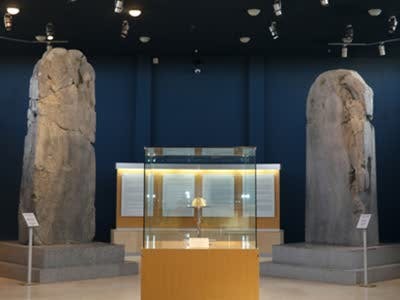Erdene Zuu Monastery
ABOUT ERDENE ZUU MONASTERY
Erdene Zuu Monastery is one of the most significant and oldest Buddhist monasteries in Mongolia. It is located in Kharkhorin, also known as Karakorum, which was the ancient capital of the Mongol Empire. Here are some key features and highlights of Erdene Zuu Monastery:

- History and Significance: Erdene Zuu Monastery was established in 1586 on the site of the former imperial capital of Karakorum. It was the first Buddhist monastery in Mongolia and played a vital role in the country's religious and cultural history. The monastery served as a center of Tibetan Buddhism and was a significant religious institution during the time of the Mongol Empire.
- Architectural Style: The monastery showcases a unique architectural style that combines elements of Mongolian, Tibetan, and Chinese design. The complex is surrounded by a massive wall with 108 stupas, symbolizing the 108 beads of a Buddhist rosary. The main temples and structures within the complex feature vibrant colors, intricate artwork, and ornate carvings.
- Temples and Prayer Halls: Within the monastery complex, there are several temples and prayer halls, each dedicated to different Buddhist deities and figures. The temples house beautifully adorned altars, statues, and thangka paintings. The main temple, Zuu of Buddha, is the largest and most significant building, housing a 26-meter-high statue of Avalokitesvara, the bodhisattva of compassion.
- Museum and Artifacts: Erdene Zuu Monastery also features a museum that displays a collection of Buddhist artifacts, religious objects, and historical relics. Visitors can explore ancient manuscripts, religious texts, ceremonial items, and other valuable items that provide insights into Mongolian Buddhist culture and history.
- Monastic Life: The monastery is home to a small community of Buddhist monks who continue to practice their religious rituals and ceremonies. Visitors can witness the monks engaging in daily prayers, chanting, and performing Buddhist rituals, offering a glimpse into the monastic way of life.
- Surroundings and Kharkhorin: Erdene Zuu Monastery is situated amidst picturesque landscapes, surrounded by grasslands and hills. Kharkhorin itself is a historically significant site, with remnants of the ancient capital of the Mongol Empire, including the ruins of the ancient city walls and the Erdene Zuu archaeological site.
- Cultural Events and Festivals: The monastery is a hub for Buddhist celebrations and festivals. During these events, visitors can witness colorful ceremonies, masked dances, and other traditional rituals performed by the monks.
Erdene Zuu Monastery is not only a place of religious worship but also a cultural and historical treasure. It offers visitors a chance to explore Mongolian Buddhism, appreciate the architectural beauty of the complex, and learn about the rich history and heritage of the region. It is a significant pilgrimage site and a must-visit destination for those interested in the spiritual and cultural aspects of Mongolia.
RELATED DESTINATIONS
Erdene Zuu Monastery is one of the most significant and oldest Buddhist monasteries in Mongolia. It is located in Kharkhorin, also known as Karakorum, which was the ancient capital of the Mongol Empire.
Kharkhorin, also known as Karakorum, is a historic city located in the Orkhon Valley of central Mongolia. It holds great historical and cultural significance as it was once the capital of the Mongol Empire during the 13th century.
Khushuu Tsaidam is an important historical site in Mongolia, known for its collection of ancient stone monuments and rock engravings. Located in the Khushuu Tsaidam area in the Arkhangai province, it is a significant cultural and archaeological site.


